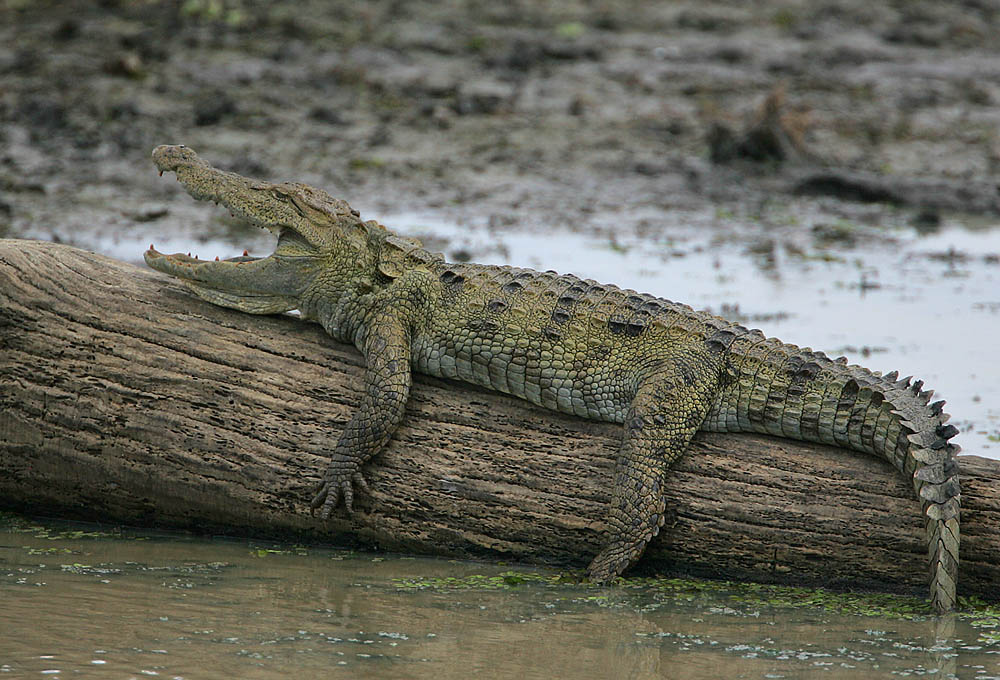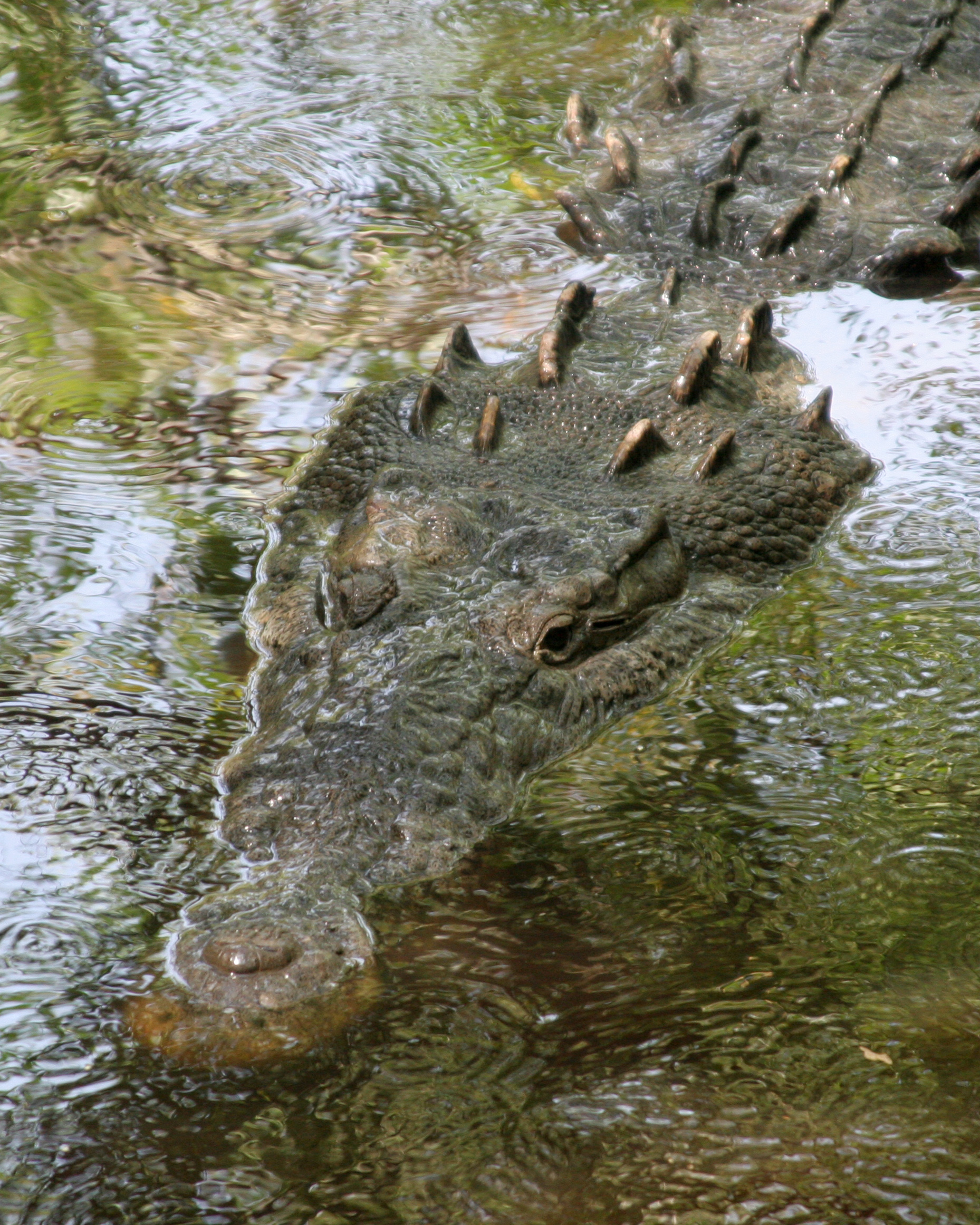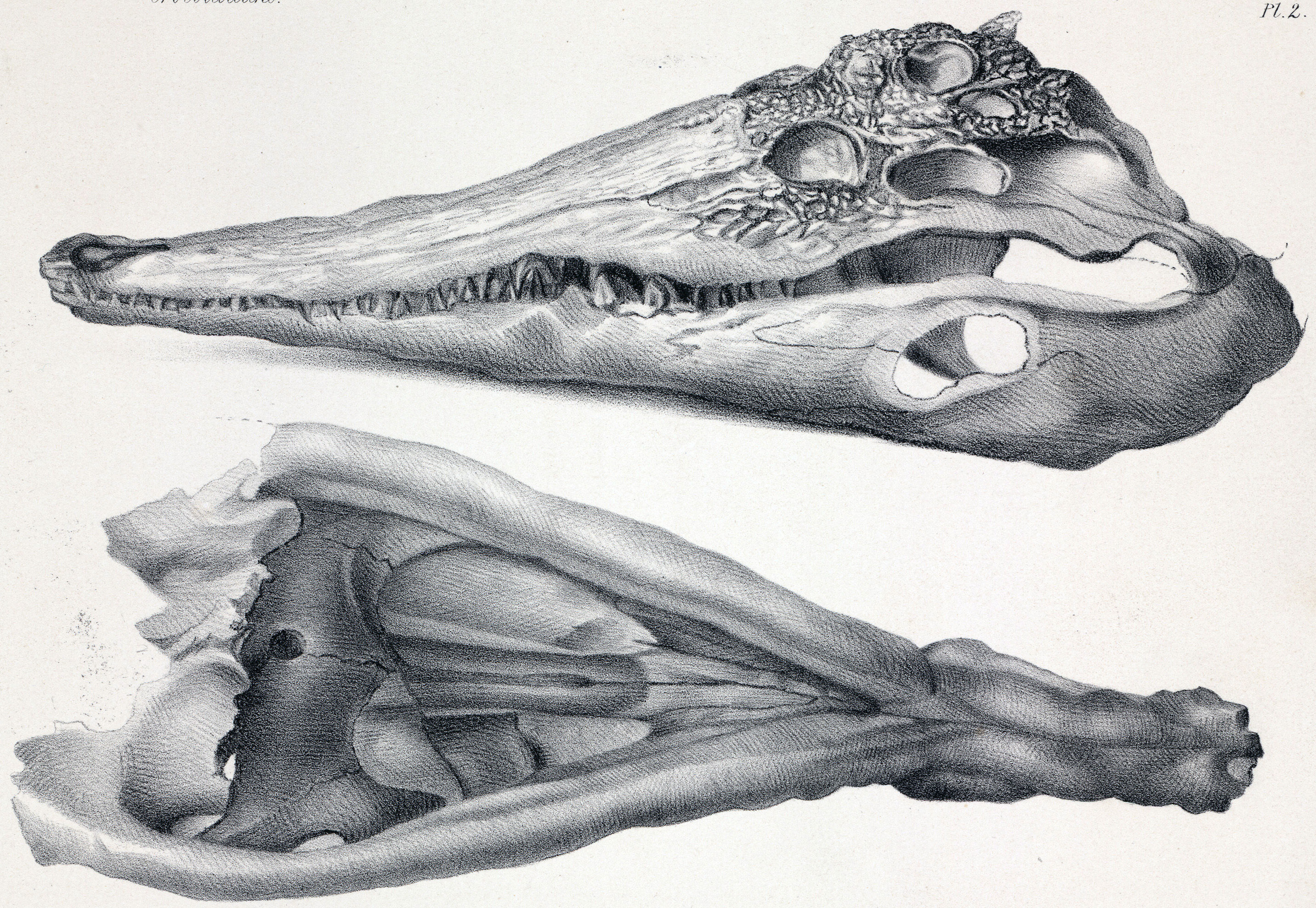|
Crocodylus Palaeindicus
''Crocodylus palaeindicus'' is an extinct species of crocodile from southern Asia. ''C. palaeindicus'' lived from the Miocene to the Pliocene. It may be an ancestor of the living Mugger crocodile. History ''C. palaeindicus'' was first named by Scottish paleontologist Hugh Falconer in 1859. Falconer found fossils of the species in the Siwalik Hills of India along with the remains of many other animals like turtles, ostriches, camels, saber-toothed cats, mastodons. Richard Lydekker later named another crocodile from the Siwalik Hills which he called ''C. sivalensis''. Although the two crocodiles are very similar, ''C. sivalensis'' was distinguished from ''C. palaeindicus'' because the margin of its skull was less convex. ''C. sivalensis'' has recently been synonymized with ''C. palaeindicus'', as the slight differences in shape are thought to be from natural variation or from fossilization. In later years, fossils were also found from Pakistan and Myanmar. Classification Histori ... [...More Info...] [...Related Items...] OR: [Wikipedia] [Google] [Baidu] |
Late Miocene
The Late Miocene (also known as Upper Miocene) is a sub-epoch of the Miocene epoch (geology), Epoch made up of two faunal stage, stages. The Tortonian and Messinian stages comprise the Late Miocene sub-epoch, which lasted from 11.63 Ma (million years ago) to 5.333 Ma. The evolution of life The gibbons (family Hylobatidae) and orangutans (genus ''Pongo'') are the first groups to split from the line leading to the hominins, including humans, then gorillas (genus ''Gorilla''), and finally, chimpanzees and bonobos (genus ''Pan (genus), Pan''). The splitting date between hominin and chimpanzee lineages is placed by some between 4 to 8 million years ago, that is, during the Late Miocene. References External links GeoWhen Database - Late Miocene Miocene, .03 Miocene geochronology, 03 Messinian, * Tortonian, * {{geochronology-stub ... [...More Info...] [...Related Items...] OR: [Wikipedia] [Google] [Baidu] |
Pakistan
Pakistan ( ur, ), officially the Islamic Republic of Pakistan ( ur, , label=none), is a country in South Asia. It is the world's List of countries and dependencies by population, fifth-most populous country, with a population of almost 243 million people, and has the world's Islam by country#Countries, second-largest Muslim population just behind Indonesia. Pakistan is the List of countries and dependencies by area, 33rd-largest country in the world by area and 2nd largest in South Asia, spanning . It has a coastline along the Arabian Sea and Gulf of Oman in the south, and is bordered by India to India–Pakistan border, the east, Afghanistan to Durand Line, the west, Iran to Iran–Pakistan border, the southwest, and China to China–Pakistan border, the northeast. It is separated narrowly from Tajikistan by Afghanistan's Wakhan Corridor in the north, and also shares a maritime border with Oman. Islamabad is the nation's capital, while Karachi is its largest city and fina ... [...More Info...] [...Related Items...] OR: [Wikipedia] [Google] [Baidu] |
Slender-snouted Crocodile
''Mecistops'' is a genus of crocodiles, the slender-snouted crocodiles, native to sub-Saharan Africa. Taxonomy and etymology Traditionally placed in ''Crocodylus'', recent studies in DNA and morphology have shown that it is in fact basal to ''Crocodylus'', thus was moved its own genus. This genus itself was long considered to contain only one species, '' M. cataphractus'', but recent genetic analysis has revealed the existence of two species: the West African slender-snouted crocodile (''M. cataphractus'') and the Central African slender-snouted crocodile (''M. leptorhynchus''). Both species diverged during the Miocene (about 6.5–7.5 million years ago) and are separated by the Cameroon Volcanic Line. Phylogeny The cladogram below is based on two studies that combined morphological and molecular (DNA sequencing) data. (Note that most morphological analyses find a closer relationship between ''Euthecodon'' and ''Brochuchus''.) Alternatively, other morphological studies h ... [...More Info...] [...Related Items...] OR: [Wikipedia] [Google] [Baidu] |
Osteolaeminae
Osteolaeminae is a subfamily of true crocodiles within the family Crocodylidae containing the dwarf crocodiles and slender-snouted crocodiles, and is the sister taxon to Crocodylinae. Taxonomy Osteolaeminae was named by Christopher Brochu in 2003 as a subfamily of Crocodylidae separate from Crocodylinae, and is cladistically defined as ''Osteolaemus tetraspis'' (the Dwarf crocodile) and all crocodylians more closely related to it than to ''Crocodylus niloticus'' (the Nile crocodile). This is a stem-based definition, and is the sister taxon to Crocodylinae. Osteolaeminae contains the two extant genera ''Osteolaemus'' and ''Mecistops'', along with several extinct genera, although the number of extant species within Osteolaeminae is currently in question. Phylogeny The cladogram below is based on two studies that combined morphological, molecular (DNA sequencing), and stratigraphic (fossil age) data. Alternatively, other morphological studies have recovered ''Mecistops'' a ... [...More Info...] [...Related Items...] OR: [Wikipedia] [Google] [Baidu] |
Crocodylus Megarhinus
''Crocodylus'' is a genus of true crocodiles in the family Crocodylidae. Taxonomy The generic name, ''Crocodylus'', was proposed by Josephus Nicolaus Laurenti in 1768. ''Crocodylus'' contains 13–14 extant (living) species and 5 extinct species. There are additional extinct species attributed to the genus ''Crocodylus'' that studies have shown no longer belong, although they have not yet been reassigned to new genera. Extant species The 13–14 living species are: Fossils ''Crocodylus'' also includes five extinct species: * † '' Crocodylus anthropophagus'' is an extinct crocodile from Plio-Pleistocene of Tanzania. * † ''Crocodylus checchiai'' is an extinct crocodile from Late Miocene of Kenya. * † ''Crocodylus falconensis'' is an extinct crocodile from Early Pliocene of Venezuela. * † ''Crocodylus palaeindicus'' is an extinct crocodile the Miocene to the Pleistocene of southern Asia. * † ''Crocodylus thorbjarnarsoni'' is an extinct crocodile from Plio-Pleistocene o ... [...More Info...] [...Related Items...] OR: [Wikipedia] [Google] [Baidu] |
Mekosuchinae
Mekosuchinae is an extinct clade of crocodilians from the Cenozoic of Australasia. They first appear in the fossil record in the Eocene in Australia, and survived until the arrival of humans: in the Pleistocene in Australia and within the Holocene in the Pacific islands of Fiji, New Caledonia and Vanuatu. Mekosuchine crocodiles are a diverse group. One of the last species, ''Mekosuchus inexpectatus'' from Holocene New Caledonia, may have been arboreal. The early Miocene species '' Harpacochampsa camfieldensis'' may have resembled a false gharial. Another mekosuchine fossil, currently undescribed, has been found in Miocene deposits from New Zealand. One genus, ''Mekosuchus'', managed to spread to the islands of the Pacific; it is believed to have island-hopped across the Coral Sea, moving first to a now submerged island known as Greater Chesterfield Island, then New Caledonia and onwards. In the Pleistocene, ''Quinkana'' was one of the top terrestrial predators of the Australian ... [...More Info...] [...Related Items...] OR: [Wikipedia] [Google] [Baidu] |
Crocodylinae
Crocodylinae is a subfamily of true crocodiles within the family Crocodylidae, and is the sister taxon to Osteolaeminae ( dwarf crocodiles and slender-snouted crocodiles). Taxonomy Crocodylinae was cladistically defined by Christopher Brochu in 1999 as ''Crocodylus niloticus'' (the Nile crocodile) and all crocodylians more closely related to it than to ''Osteolaemus tetraspis'' (the Dwarf crocodile). This is a stem-based definition, and is the sister taxon to Osteolaeminae. Crocodylinae contains the extant genus '' Crocodylus''. It is disputed as to whether is also includes ''Mecistops'' (slender-snouted crocodiles), or the extinct genus Voay. Phylogeny Some morphological studies have recovered ''Mecistops'' as a basal member of Crocodylinae, more closely related to '' Crocodylus'' than to ''Osteolaemus'' and the other members of Osteolaeminae, as shown in the cladogram below. The below cladogram is based on a 2021 study using paleogenomics that extracted DNA from the ext ... [...More Info...] [...Related Items...] OR: [Wikipedia] [Google] [Baidu] |
Tomistominae
Tomistominae is a subfamily of crocodylians that includes one living species, the false gharial. Many more extinct species are known, extending the range of the subfamily back to the Eocene epoch. In contrast to the false gharial, which is a freshwater species that lives only in southeast Asia, extinct tomistomines had a global distribution and lived in estuaries and along coastlines. The classification of tomistomines among Crocodylia has been in flux; while traditionally thought to be within Crocodyloidea, molecular evidence indicates that they are more closely related to true gharials as members of Gavialoidea. Description Tomistomines have narrow or longirostrine snouts like gharials. The living false gharial lives in fresh water and uses its long snout and sharp teeth to catch fish, although true gharials are more adapted toward piscivory, or fish-eating. Despite the similarity with gharials, the shapes of bones in tomistomine skulls link them with crocodiles. For example, ... [...More Info...] [...Related Items...] OR: [Wikipedia] [Google] [Baidu] |
Crocodylidae
Crocodiles (family Crocodylidae) or true crocodiles are large semiaquatic reptiles that live throughout the tropics in Africa, Asia, the Americas and Australia. The term crocodile is sometimes used even more loosely to include all extant members of the order Crocodilia, which includes the alligators and caimans (family Alligatoridae), the gharial and false gharial (family Gavialidae) among other extinct taxa. Although they appear similar, crocodiles, alligators and the gharial belong to separate biological families. The gharial, with its narrow snout, is easier to distinguish, while morphological differences are more difficult to spot in crocodiles and alligators. The most obvious external differences are visible in the head, with crocodiles having narrower and longer heads, with a more V-shaped than a U-shaped snout compared to alligators and caimans. Another obvious trait is that the upper and lower jaws of the crocodiles are the same width, and the teeth in the lower ... [...More Info...] [...Related Items...] OR: [Wikipedia] [Google] [Baidu] |
Cladogram
A cladogram (from Greek ''clados'' "branch" and ''gramma'' "character") is a diagram used in cladistics to show relations among organisms. A cladogram is not, however, an evolutionary tree because it does not show how ancestors are related to descendants, nor does it show how much they have changed, so many differing evolutionary trees can be consistent with the same cladogram. A cladogram uses lines that branch off in different directions ending at a clade, a group of organisms with a last common ancestor. There are many shapes of cladograms but they all have lines that branch off from other lines. The lines can be traced back to where they branch off. These branching off points represent a hypothetical ancestor (not an actual entity) which can be inferred to exhibit the traits shared among the terminal taxa above it. This hypothetical ancestor might then provide clues about the order of evolution of various features, adaptation, and other evolutionary narratives about ance ... [...More Info...] [...Related Items...] OR: [Wikipedia] [Google] [Baidu] |
Basal (phylogenetics)
In phylogenetics, basal is the direction of the ''base'' (or root) of a phylogenetic tree#Rooted tree, rooted phylogenetic tree or cladogram. The term may be more strictly applied only to nodes adjacent to the root, or more loosely applied to nodes regarded as being close to the root. Note that extant taxa that lie on branches connecting directly to the root are not more closely related to the root than any other extant taxa. While there must always be two or more equally "basal" clades sprouting from the root of every cladogram, those clades may differ widely in taxonomic rank, Phylogenetic diversity, species diversity, or both. If ''C'' is a basal clade within ''D'' that has the lowest rank of all basal clades within ''D'', ''C'' may be described as ''the'' basal taxon of that rank within ''D''. The concept of a 'key innovation' implies some degree of correlation between evolutionary innovation and cladogenesis, diversification. However, such a correlation does not make a given ca ... [...More Info...] [...Related Items...] OR: [Wikipedia] [Google] [Baidu] |


%2C_NPSPhoto_(9255693421).jpg)



